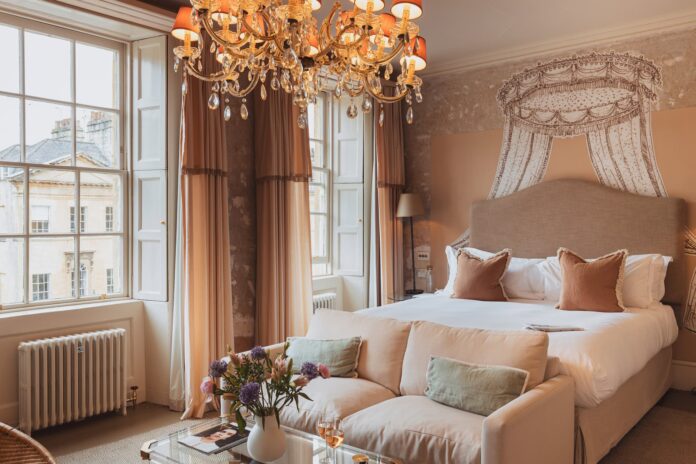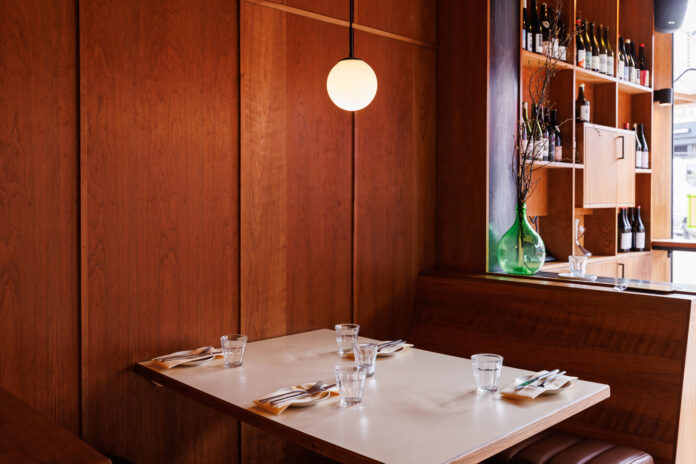Brusque, buoyant, textural and oh-so-trendy, the bare brick wall trend isn’t letting up anytime soon. Popular in hip new restaurant openings, underground bars and inner-city apartments, its affordability and adaptability has seen bare brick’s popularity soar in recent years.
But where did this trend begin, we hear you ask? Graeme Brooker, Professor of Interior Design at the Royal College of Art (RCA), explains to The Independent that the “The pioneering designers of the reuse of industrial buildings and spaces were initially the creatives who occupied these spaces in the various derelict inner cities of the early 70s”.
The derelict buildings “rendered obsolete by Thatcherism” were turned into pleasant and cheap places to work, live and socialise. Since then, this sensibility has turned into a desirable aesthetic, indicative of a no-fuss, focused approach to doing things, whether that’s at home or work. However you’re hoping to channel this look, here’s the IDEAL guide to working with bare brick in interior design.
WHAT ARE THE PROS AND CONS?
The primary pro is to look cool, of course. Seriously though, the biggest advantage of bare brick is the aesthetics it provides. This isn’t a look that’s for everyone, but if you’re reading this article, then the chances are high that you know it appeals to you.
Being able to see the bricks themselves helps to evoke a sense of history – especially if you’re fortunate enough to live in a home whose history dates back for centuries – whilst maintaining a totally modern visual appeal. Why cover that up with plaster, hey?
There are, however, cons. The biggest thing to be aware of when you’re exposing brick is that brickwork is actually full of teeny tiny holes. That means that stray pieces of dirt and drops of moisture can find their way into the brickwork, and ultimately, cause it to deteriorate.
Another thing to consider is that you might not know exactly how attractive and sturdy the brickwork is until you remove what’s covering it. In some cases, interior brick walls might have been made by apprentice bricklayers using inferior materials – so there’s always the risk of disappointment or even discovering structural flaws when it’s exposed.
EXPOSING THE BRICKWORK
As the Guardian writes “Most UK housing stock hides it [brickwork] under plaster – if your home is pre-1950s, there’s a good chance brick was used.”
You can do this job yourself, should you possess enough bravery, using a bricklayer’s chisel and masonry hammer to chip away at the plaster. A wire brush or scourer dipped in hydrochloric acid will remove more stubborn areas of plaster.
Removing the plaster requires painstaking care and attention. Give the wall a smack with a hammer, and begin peeling. Once you’ve revealed a small section, you can start slowly working your way across the wall. Prepare for a lot of dust – because you’re going to get it! Be warned, chiselling plaster is messy work and perhaps better left in the capable hands of a professional.
Regardless of who does the job, what happens if you’re not happy with the results?
It might be that you’re dissatisfied with the results you get. In this case, it’s easy to overboard the wall or to apply a new layer of plaster. Make sure that you get everything dead straight, and that you use a quality plasterboard adhesive.

HOW TO CLEAN AND PREPARE BRICKWORK
If you want to protect the underlying brickwork, then it’s essential that you first clean it, then offer it a layer of protection against moisture. This treatment might be designed to be transparent and unobtrusive, or it might be something that draws attention to itself.
Remove as much dust as possible by sponging down the entire wall. Then use a wire brush and a sugar-soap solution to go even further. You can use a sandblaster or brick acid if there are any sections of plaster that just won’t come off. Once you’re happy and the wall is dry, apply your sealant.
If you want to paint the wall, then first apply a primer to ensure that subsequent layers actually stick where they’re supposed to.
As the Independent explains “Rough, brick walls give an industrial feel without sacrificing the charm and familiarity of the terracotta tones, and can be accessorised with further industrial pieces’’.
WHAT IF I DON’T HAVE BRICK WALLS?
The urbanite’s dream, this one – to achieve this stylish look without intervention. If you’re keen to follow the trend without any of the work, consider a brick-effect wallpaper. Yep, companies have even designed modern wallpaper to get that trendy industrial look and it’s not nearly as tacky as it sounds!
HOW TO LOOK AFTER YOUR EXPOSED BRICK WALLS
We once wrote that “The biggest challenge for homeowners who choose an exposed brick interior isn’t in the exposing, per se, but rather, in the taking care of their brick walls. Bricks are sensitive, brittle and porous and each of these characteristics presents their own set of challenges.”. With that in mind, let us direct you to our article on 5 IDEAL tips for taking care of your exposed brick wall.





